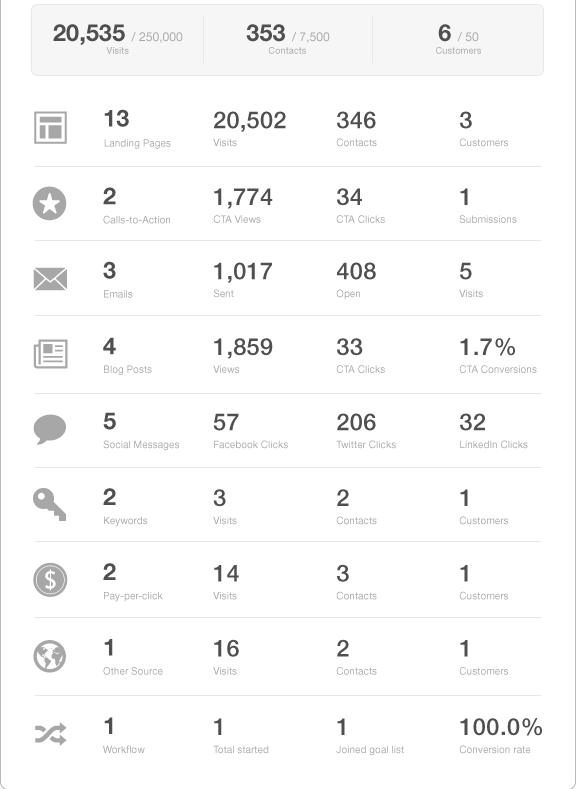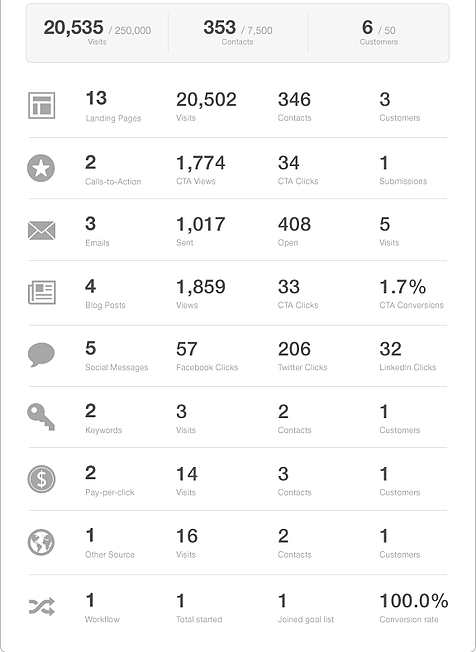
The HubSpot Campaign Tool: Why It’s Great for Reporting
December 12, 2014
By Andrew Macey
We’ve all talked at length about the importance of good reporting. Understanding the success of our marketing efforts is critical for planning future campaigns. It’s important to understand what was effective and where improvements can be made. Taking it a step further, it's helpful to understand which components performed well and which could be reworked.
Armed with this information, marketers can zero in on areas of improvement to yield better results the next time around.What can be difficult, however, is to report on both sides: the overall campaign performance as well as the results of each individual part.
With HubSpot’s campaign analytics tool, marketers can get this information in an easy-to-digest, well laid-out report. By tagging each component with the proper campaign, marketers can easily aggregate this data.
Assessing Overall Campaign Performance
The first question marketers are usually asked is, “How well did our last campaign perform?” This is a high-level question about the number of leads or contacts generated from a group of marketing initiatives.
In a campaign, there are usually a handful of blog articles, social promotions, landing pages, emails, workflows, and possibly some additional paid promotion; all working toward the same goal.
When looking for a high-level report, HubSpot provides an aggregate number of visits, contacts, and customers associated with a campaign. This part of the report is great for quick updates and overall marketing reports, and it looks something like this:
Diving Deeper into the Results
As mentioned earlier, it’s the granular data that provides us direction on future campaigns. It’s important to look at which components performed best and where we can add additional value the next time around. With each part of the campaign laid out, we can see overall interaction from various channels, such as social clicks or email opens.
Furthermore, we're able to click into each channel and see metrics individually, which is extremely helpful when assessing which specific email campaign was most effective or which blog article had the most CTA conversions.
Reporting individually on these marketing actions can be very useful for teams that delegate specific responsibilities. If you have team members uniquely responsible for blog creation or social promotion, it can be great to show results stemming from their work.
Using the Campaign Data
When planning out the next campaign, it's helpful to take notice of individual results. You want to look for outliers among the data set, specifically which performed the highest, and which resulted in lower-than-expected outcomes.
Identifying these outliers allows marketers to understand where they can repeat marketing actions that performed well, but also rethink under-performing initiatives. By doing so, each campaign should allow for some new testing, while still maintaining a level of success. Additionally, this often serves as a guide for paid search. Using tracking URLs, we can associate paid marketing efforts with these campaigns, and generate useful data from them as well.
HubSpot’s campaign analytics tool is a fantastic way to group all marketing efforts together and report back on the results. Being able to granularly see which components performed best provides great insight into future campaigns and how they should be executed. Make sure to tag your content and social promotions with the proper campaign so that HubSpot can collect proper data in the background.

About the author
Andrew Macey was formerly the Director of Sales at SmartBug and is a HubSpot alumni. He has more than 5 years experience in inbound marketing and is a graduate of the University of Vermont. Read more articles by Andrew Macey.





















